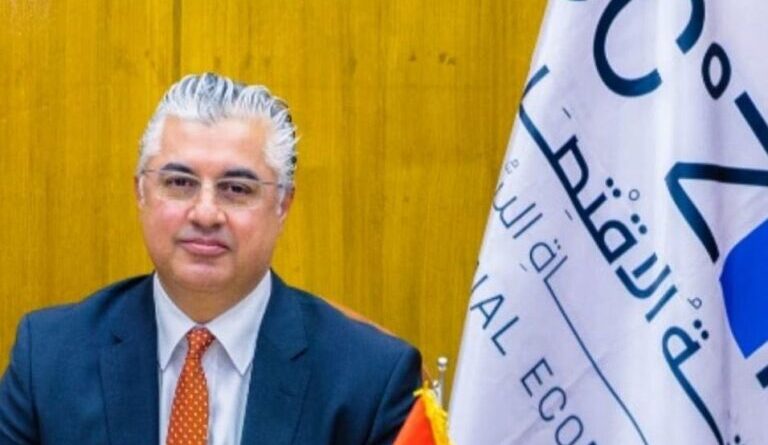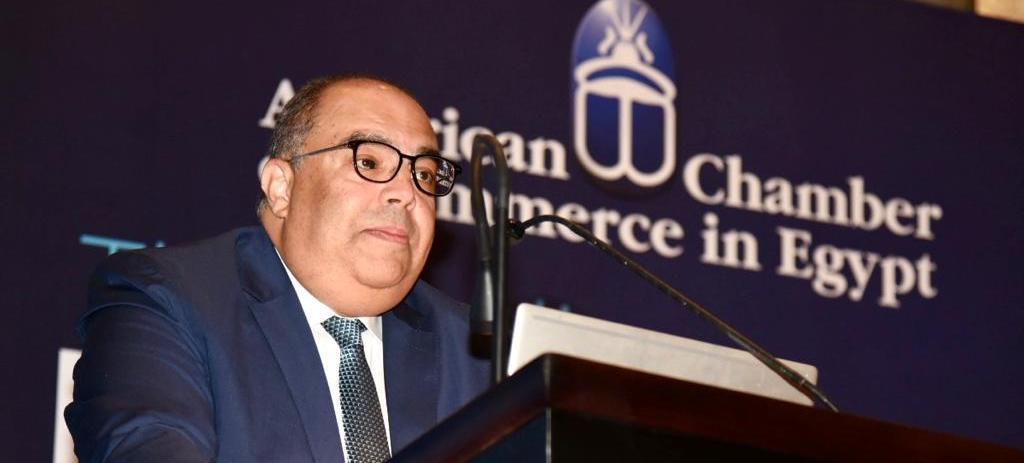This interview appeared in our November 2023 issue.
Suez Canal Economic Zone Chairman Waleid Gamal El-Dien, talks about hydrogen projects that would allow Egypt to become a regional hub in a one-on-one interview with Business Monthly.
All replies were edited for length and clarity.
What are your plans to make the Suez Canal Economic Zone (SCZONE) environmentally friendly?
We are determined to attract companies and projects committed to the conservation of natural resources, pollution reduction, and other environmentally conscious business practices.
Companies are obliged to conduct an environmental and social impact assessment before acquiring their permits, thus ensuring investments coming to this world-class hub are sustainable.
What incentives are available for investors who want to produce green hydrogen fuel?
The SCZONE offers incentives stipulated by the Law of Special Economic Zones (83/2002). It provides zero customs tax, zero VAT, and a 50% corporate tax refund for seven years. It also allows 100% foreign ownership of local assets and 10% foreign labor, who get five-year residency permits.
The zone operates as a one-stop shop to ensure effective and efficient facilitation of all the services a new project requires, including further streamlining procedures and minimizing administrative and financial burdens.
Additionally, Parliament is discussing new government incentives to support green hydrogen investments and complementary and feeding industries.
What are the latest updates on green hydrogen projects?
The SCZONE, the Egyptian Ministry of Electricity and Renewable Energy, and The Sovereign Fund of Egypt have signed 23 MoUs with international and national companies and consortiums. Of those, 11 were converted into binding framework agreements to implement their projects for producing green hydrogen and its derivatives between 2026 and 2030.
The signed projects equate to 50 gigawatts of renewable energy from solar and wind, more than 3 million tons per annum of green hydrogen, and 17 million tons of green hydrogen derivatives. That includes green ammonia or e-methanol, with investments estimated at nearly $90 billion.
Have investors shown interest in establishing factories that use green hydrogen fuel?
We have passed the “interest phase.” The zone is hosting the first and, to date, the largest operational green hydrogen facility at Sokhna Industrial Area. President Abdel Fattah El-Sisi and Jonas Gahr Støre, the Norwegian prime minister, inaugurated it during COP27.
The plant’s capacity is 100 megawatt electrolyzers. That is enough to produce up to 50 kilotonnes per annum of green ammonia. A consortium comprising Scatec, OCI, Fertiglobe, and The Sovereign Fund of Egypt built that facility.
In addition to our 23 MoUs and 11 framework agreements, at least 10 companies and consortiums have submitted preliminary proposals and will soon sign MoUs. This number grows almost daily as we see consolidations of current projects.
This industry attracted significant players in the renewable energy and oil sectors that see green hydrogen as the future of their industries. Meanwhile, venture capitalists realized the necessity to hedge their investments by investing in green hydrogen.
What are some other reasons why the SCZONE should appeal to investors?
Green hydrogen investors would benefit from its strategic location around one of the world’s most vital maritime routes, the Suez Canal, and its proximity to Europe, where demand for green hydrogen is rising.
The pivotal incentive the government gives green hydrogen investors is the integrated ecosystem, whereby the developer signs off for the project with all relevant Egyptian stakeholders, including the Ministry of Electricity & Renewable Energy, for the upstream segment of the project. That includes the generation of renewable energy and connection to the grid.
It also consists of the mid-downstream segment, which happens at SCZONE. It starts with power substations that capture generated renewable energy, desalinated water stations, and industrial complexes. It also includes storage tanks at the ports and transportation from the factory to the storage sites.
The Sovereign Fund of Egypt signs off on these projects as a potential equity investor.
The SCZONE has allocated two clusters to host the green hydrogen production facilities. The first is a 30 square kilometer plot at Sokhna Industrial Area, which connects directly to Sokhna Port, Egypt’s largest port on the Red Sea. The other is a 5 square kilometer plot at East Port Said Industrial Area directly connected to the East Port Said Port at the northern entrance to the Suez Canal.
We selected those two clusters based on investor preferences, and they can be expanded to meet demand.
Investors gain access to industrial and port lands via a 50-year usufruct model. The SCZONE also offers a “shared facilities scheme” to lower capital expenses, thus allowing the production of green hydrogen at competitive prices.
The shared facilities include a centralized desalination plant and a utility corridor connecting production sites to the storage locations. Investors lay pipe infrastructure, with the zone providing one shared pipe for small to medium-sized producers.
The SCZONE also provides power substations and storage tanks on a shared basis for small to medium-sized projects. We are negotiating with several international liquid bulk operators to build and operate Sokhna and East Port Said Port terminals.
All shared facilities will be powered by renewable energy, thus enabling developers to get sustainability or green certifications.
The SCZONE also is working to attract complementary industries around green hydrogen manufacturing clusters to ensure prompt serviceability of tenants. We are talking to large international producers of PV panels, wind blades and turbines, electrolyzers, and water desalination equipment.
Lastly, we are partnering with the private sector to establish a technical academy to train the skilled labor needed for this significant industry.
Will the green hydrogen projects meet local demand only, or do you plan to export?
When discussions started less than two years ago, potential investors wanted to export their production.
However, we are witnessing rapid changes in the dynamics of this emerging industry. Investors see the potential of SCZONE becoming a regional hub for producing green hydrogen and its derivatives.
The leaps we took to realize this vision made investors willing to move their heavy-energy industries to the SCZONE to benefit from incentives and an abundant green hydrogen supply, thus fulfilling their SDG (sustainable development goal) pledges and complying with international market requirements.
A significant milestone was the first operation to refuel Maersk Line’s container vessel with e-methanol at East Port Said Port in August. It was the first e-bunkering operation in Egypt, Africa, and the Middle East.
OCI, the world’s largest producer of methanol fuel, refueled the Maersk Line container vessel with 500 tons of e-methanol at East Port Said Port. That is the highest quantity it had received compared to its other pit stops in South Korea and Singapore during its journey from Asia to Europe.
Based on this success, OCI was granted a six-month permit to practice e-bunkering at East Port Said Port.







